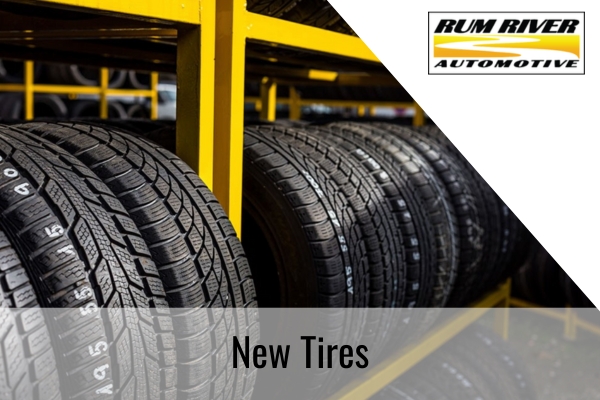When should you get new tires for your car?
Tires should be changed regularly to maintain vehicle control, safe traction, and overall safety. So, when should you get new tires for your car? Below are some signs to look for, tips to help your tires last longer, and regular tire service is essential for safe driving.
- Tread Wear: The surest way to evaluate tires is to look at the tread depth. New tires often have tread depths ranging from 10/32" to 11/32". If the edge of the tip gets down to 2/32", you should replace it. You can also use the penny test. Lay the penny in the tread, ensuring Lincoln's head faces upside down. When your view of the top of his head is clear, that is your sign to replace your tires. This way, you would have a successful answer to when should you get new tires for your car.
- Cracks or Bulges: Cracks found on the rubber or bulges developing on the sidewall are clear signs to change your tires. Cracks or bulges perfectly answer the question of when should you get new tires for your car. This damage may result in a dangerous and unexpected blowout on the road. Regular tire service often uncovers these issues early on.
- Vibrations or Noise: Any unusual vibrations or noise could suggest the car's tires are worn out, not aligned properly, or damaged inside. Usually, this calls for regular tire service. Not paying attention to these symptoms can result in bigger issues with your car's suspension or steering system. So, if you want to know when should you get new tires for your car, listen for unusual noises.
- Tire Age: Just because your tread is okay doesn't mean old tires shouldn't be swapped. Generally, manufacturers advise swapping out your tires after 6 to 10 years of use, regardless of how much you have driven. Use the DOT code on the tire's side to determine when a replacement is needed.
At which point should you think about replacing your car's tires? When the tread wears thin, the tires have reached the end of their useful life or are somehow damaged. Replacing old tires and practicing proper tire care improves your car or truck and prevents accidents that can be expensive. It's best to keep your tires well-maintained for your safety and the life of your car.
Still, wondering when should you get new tires for your car? Contact our ASE Certified Technicians at Rum River Automotive for more information about tire service and to schedule an appointment. Our auto shop proudly serves residents in the community of Princeton, MN, and in the surrounding areas of Milaca, MN, and Zimmerman, MN.

Tires should be changed regularly to maintain vehicle control, safe traction, and overall safety. So, when should you get new tires for your car? Below are some signs to look for, tips to help your tires last longer, and regular tire service is essential for safe driving.
- Tread Wear: The surest way to evaluate tires is to look at the tread depth. New tires often have tread depths ranging from 10/32" to 11/32". If the edge of the tip gets down to 2/32", you should replace it. You can also use the penny test. Lay the penny in the tread, ensuring Lincoln's head faces upside down. When your view of the top of his head is clear, that is your sign to replace your tires. This way, you would have a successful answer to when should you get new tires for your car.
- Cracks or Bulges: Cracks found on the rubber or bulges developing on the sidewall are clear signs to change your tires. Cracks or bulges perfectly answer the question of when should you get new tires for your car. This damage may result in a dangerous and unexpected blowout on the road. Regular tire service often uncovers these issues early on.
- Vibrations or Noise: Any unusual vibrations or noise could suggest the car's tires are worn out, not aligned properly, or damaged inside. Usually, this calls for regular tire service. Not paying attention to these symptoms can result in bigger issues with your car's suspension or steering system. So, if you want to know when should you get new tires for your car, listen for unusual noises.
- Tire Age: Just because your tread is okay doesn't mean old tires shouldn't be swapped. Generally, manufacturers advise swapping out your tires after 6 to 10 years of use, regardless of how much you have driven. Use the DOT code on the tire's side to determine when a replacement is needed.
At which point should you think about replacing your car's tires? When the tread wears thin, the tires have reached the end of their useful life or are somehow damaged. Replacing old tires and practicing proper tire care improves your car or truck and prevents accidents that can be expensive. It's best to keep your tires well-maintained for your safety and the life of your car.
Still, wondering when should you get new tires for your car? Contact our ASE Certified Technicians at Rum River Automotive for more information about tire service and to schedule an appointment. Our auto shop proudly serves residents in the community of Princeton, MN, and in the surrounding areas of Milaca, MN, and Zimmerman, MN.



